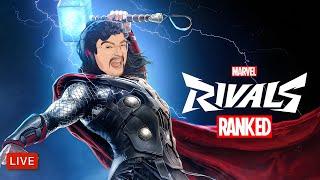
The Omnichannel Customer Experience – What Is It?
👉 Watch more customer service tips on ShepTV! (http://www.ShepTV.com)
There is a term in the customer service world that is often misused or misunderstood. That term is omnichannel. I have had many conversations with clients about the omnichannel experience, and I’ve even shared content about it with our subscribers in the Shepard Letter and my videos. It’s time to bring it back with what may be the perfect example.
First, let’s talk about the basic definition. It all started with a concept known as multi-channel. This was about different ways customers could communicate with you. For example, they could use phone or email. That’s two channels. Today there are many others, such as text, social media, apps, and more. It doesn’t matter how many channels you have, once you get past one, you are in the world of multi-channel. The problem is that while multi-channel gives you options to choose your favorite method of communication if you switch from one channel to the next, you typically have to start the conversation over.
Then the phrase omnichannel came around. This meant that you could cross from one channel to the next and have seamless conversations. That’s where people get confused. What does that really mean? Well, here’s my “perfect” example to describe the omnichannel experience, which by the way, is what you want to provide for your customers.
I bought my wife one of those high-end electronic massagers to use whenever her muscles are tight after a tough workout. I was so excited to give it to her. As she unwrapped it, she was excited as well. That was until we plugged it in. When we did, nothing happened.
Maybe the battery wasn’t charged, so I connected the charger and let it sit for a few hours. We came back and turned it on, and again, nothing happened.
I immediately went to the company’s website, opened the FAQ (Frequently Asked Questions) page, but didn’t find my answer. A pop-up window asked if I needed help, so I started to interact via chat. It could have been an AI-infused chatbot or a human typing back. It didn’t matter. The result was a request to send a video of the problem or have a video chat, like Facetime, with them so they could see if I was properly charging and turning on the unit. So, I shot a quick video of me connecting the charger and showing them that the on/off light wasn’t coming on. I sent it to them and within a few minutes, I received an email that confirmed there was definitely something wrong with my unit and they would send a new one. Just two hours later, I received an email notifying me that a new massager was on its way. Two days later it arrived.
In that scenario, I used the website FAQ, live chat, video, and email. The conversation crossed seamlessly and flawlessly from one channel of communication to the next. A perfectly executed omnichannel experience.
So, now does omnichannel make sense?
There is a term in the customer service world that is often misused or misunderstood. That term is omnichannel. I have had many conversations with clients about the omnichannel experience, and I’ve even shared content about it with our subscribers in the Shepard Letter and my videos. It’s time to bring it back with what may be the perfect example.
First, let’s talk about the basic definition. It all started with a concept known as multi-channel. This was about different ways customers could communicate with you. For example, they could use phone or email. That’s two channels. Today there are many others, such as text, social media, apps, and more. It doesn’t matter how many channels you have, once you get past one, you are in the world of multi-channel. The problem is that while multi-channel gives you options to choose your favorite method of communication if you switch from one channel to the next, you typically have to start the conversation over.
Then the phrase omnichannel came around. This meant that you could cross from one channel to the next and have seamless conversations. That’s where people get confused. What does that really mean? Well, here’s my “perfect” example to describe the omnichannel experience, which by the way, is what you want to provide for your customers.
I bought my wife one of those high-end electronic massagers to use whenever her muscles are tight after a tough workout. I was so excited to give it to her. As she unwrapped it, she was excited as well. That was until we plugged it in. When we did, nothing happened.
Maybe the battery wasn’t charged, so I connected the charger and let it sit for a few hours. We came back and turned it on, and again, nothing happened.
I immediately went to the company’s website, opened the FAQ (Frequently Asked Questions) page, but didn’t find my answer. A pop-up window asked if I needed help, so I started to interact via chat. It could have been an AI-infused chatbot or a human typing back. It didn’t matter. The result was a request to send a video of the problem or have a video chat, like Facetime, with them so they could see if I was properly charging and turning on the unit. So, I shot a quick video of me connecting the charger and showing them that the on/off light wasn’t coming on. I sent it to them and within a few minutes, I received an email that confirmed there was definitely something wrong with my unit and they would send a new one. Just two hours later, I received an email notifying me that a new massager was on its way. Two days later it arrived.
In that scenario, I used the website FAQ, live chat, video, and email. The conversation crossed seamlessly and flawlessly from one channel of communication to the next. A perfectly executed omnichannel experience.
So, now does omnichannel make sense?
Тэги:
#what_is_omnichannel_customer_experience #omnichannel_experience #customer_service #multichannel_vs_omnichannel #how_to_communicate_with_customers #omnichannel_customer_experiences #frequently_Asked_Questions #customer_service_experience #Shep_Hyken #seamless_customer_experience #chat_customer_service #live_chat #CX #customer_experience #customer_service_tipsКомментарии:
The Omnichannel Customer Experience – What Is It?
Shep Hyken: Customer Service & CX Expert
r2h Jaisalmer dunes
Tow forgen In tollywood
这108条人生法则,能解决你生活中90%的问题
傳燈語錄QUOTES
Lil Jon - Snap Yo Fingers (feat. E-40, Sean Paul of Youngbloodz) (Official Music Video)
Radial by The Orchard
Thor Ka Hathoda Bhari Nikla | Marvel Rivals Live Stream India
The Mystic Live
Актерское агентство "Объектив"
Актерское агентство Объектив
Часть 2. Секреты бывалого сборщика. Установка верхних модулей кухни
Сборщик мебели Антон. Спб и ЛО
Loser Boy Makes The Most Popular Girl Fall in Love With Him
AniDaily Recaps


























